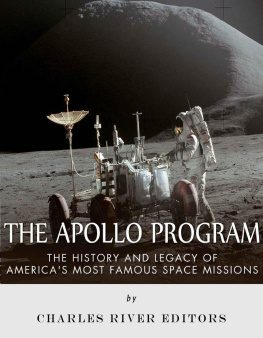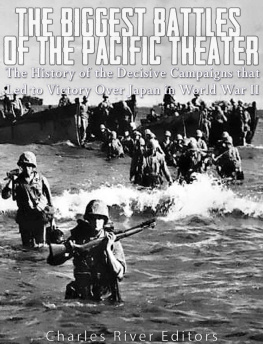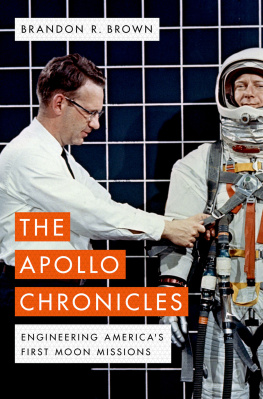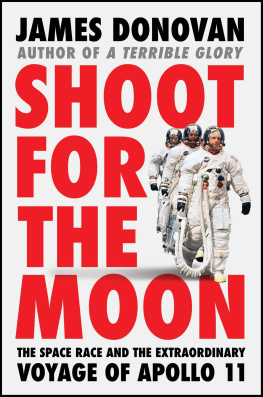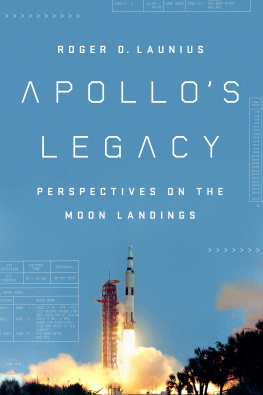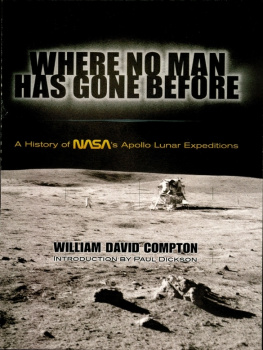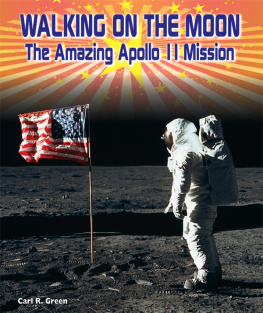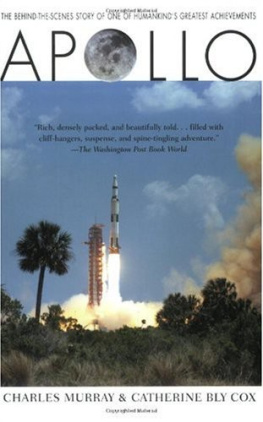Charles River Editors provides superior editing and original writing services in the digital publishing industry, with the expertise to create digital content for publishers across a vast range of subject matter. In addition to providing original digital content for third party publishers, we also republish civilizations greatest literary works, bringing them to new generations of readers via ebooks.
Sign up here to receive updates about free books as we publish them , and visit Our Kindle Author Page to browse todays free promotions and our most recently published Kindle titles.
Introduction

The insignia for the Apollo 1 mission
The Apollo Missions
There's always a possibility that you can have a catastrophic failure, of course; this can happen on any flight; it can happen on the last one as well as the first one. So, you just plan as best you can to take care of all these eventualities, and you get a well-trained crew and you go fly. - Gus Grissom, December 1966
The Apollo space program is the most famous and celebrated in American history, but the first successful landing of men on the Moon during Apollo 11 had complicated roots dating back over a decade, and it also involved one of NASAs most infamous tragedies. Landing on the Moon presented an ideal goal all on its own, but the governments urgency in designing the Apollo program was actually brought about by the Soviet Union, which spent much of the 1950s leaving the United States in its dust (and rocket fuel). In 1957, at a time when people were concerned about communism and nuclear war, many Americans were dismayed by news that the Soviet Union was successfully launching satellites into orbit.
Among those concerned was President Dwight D. Eisenhower, whose space program was clearly lagging a few years behind the Soviets space program. From 1959-1963, the United States worked toward putting satellites and humans into orbit via the Mercury program, but Eisenhowers administration was already designing plans for the Apollo program by 1960, a year before the first Russian orbited the Earth and two years before John Glenn became the first American to orbit the Earth.
On May 25, 1961, President John F. Kennedy addressed Congress and asked the nation to commit itself to achieving the goal, before this decade is out, of landing a man on the Moon and returning him safely to the Earth. Given Americas inability to even put a man in orbit yet, this seemed like an overly ambitious goal, and it isnt even clear that Kennedy himself believed it possible; after all, he was reluctant to meet NASA Administrator James E. Webbs initial funding requests.
As Apollo 11s name suggests, there were actually a number of Apollo missions that came before, many of which included testing the rockets and different orbital and lunar modules in orbit. In fact, it wasnt until Apollo 8 that a manned vehicle was sent towards the Moon and back, and before that mission, the most famous Apollo mission was Apollo 1, albeit for all the wrong reasons.
There were no delusions regarding the dangers of manned space travel, but they were brought home on January 27, 1967, when all three astronauts were killed by a fire that ignited in the cabin during a launch rehearsal. To this day, there is still debate over what ignited the fire, but the disaster made clear that the modules being used by NASA had a series of fatal flaws. After the Apollo 1 tragedy, NASA changed its plans by first running a series of unmanned missions to test the Saturn rockets and the different modules throughout 1967 and early 1968. and it would not be until Apollo 7 launched about 20 months after the disaster that NASA dared to conduct another manned mission.
At 9:32 a.m. on July 16, 1969, time stood still throughout the world, as thousands converged on the Kennedy Space Center and millions tuned in on live television. At that instant, the first rumbles began to shake the ground, as a small spacecraft attached to the giant Saturn V rocket several hundred feet tall started lifting off. Quickly being propelled several thousand miles per hour, it takes just a few minutes to reach a speed of 15,000 miles per hour, and just a few more minutes to enter orbit at 18,000 miles per hour. Apollo 11 was on its way to a historic first landing on the Moon.
Apollo 11s trip to the Moon may have started on that day in 1969, but the journey had begun over a decade earlier as part of the Space Race between the United States and the Soviet Union. While landing on the Moon was a noble goal proposed as early as 1961 by President Kennedy, NASA and the nation as a whole moved with urgency simply to best the Soviet Union, which had spent the 1950s beating America to important space-related firsts, including launching the first satellite and cosmonaut in orbit. In fact, President Eisenhowers administration began the design for the Apollo program in 1960 in hopes of getting a head start to the Moon, despite the fact the plans originated a year before the first Russian cosmonaut, Yuri Gagarin, orbited the Earth and two years before John Glenn did.
Over the decade, NASA would spend tens of billions on the Apollo missions, the most expensive peacetime program in American history to that point, and even though Apollo 11 was only one of almost 20 Apollo missions, it was certainly the crown jewel. only one of nearly 20 Apollo missions conducted by NASA. And to make Apollo 11 a success, it would take nearly a decade of planning by government officials, hard work by NASA scientists, intense training by the astronauts, and several missions preceding Apollo 11. It also cost over $20 billion, making the Apollo program the most expensive peacetime program in American history at the time.
Americans sure felt the cost was worth it as they watched the first live shots of astronauts Neil Armstrong and Buzz Aldrin walking on the Moon. As he left his first footprint on the Moon, Armstrong transmitted one of the 20 th centurys most famous phrases: Thats one small step for man, one giant leap for mankind.
Apollo 12 successfully landed astronauts on the Moon just a few months after Apollo 11s successful mission. Apollo 12 was actually more successful than Apollo 11 from the standpoint of fulfilling the mission objectives, but it was naturally overshadowed since it did not come first.
Another reason Apollo 12 is mostly forgotten today can be credited to the dramatic and fateful Apollo 13 mission, which took twists and turns nobody could have predicted when it launched on April 11, 1970. Apollo 13s mission was to land on the Moon near the Fra Mauro highlands, which were hills that had somehow formed in the middle of a huge crater tens of miles wide. The mission was supposed to test for seismic activity and take samples to analyze the crater and try to find an explanation for the formation of the hills.
Of course, as is widely known today, Apollo 13 never made the landing. The ever-dependable Saturn V properly thrust Apollo 13 out of the Earths orbit and toward the Moon, but two days into the voyage, the crew heard a loud bang. At first, the crew was not sure what had happened, leading Commander James Lovell to famously transmit to Mission Control, Houston, weve had a problem. As it turned out, one of the main oxygen tanks had ruptured in the Service Module, causing a catastrophic failure. The Command/Service Modules fuel cells all shut down, leaving the command/Service Module to run on backup batteries. In other words, Apollo 13 was adrift between the Earth and the Moon with limited battery power.

